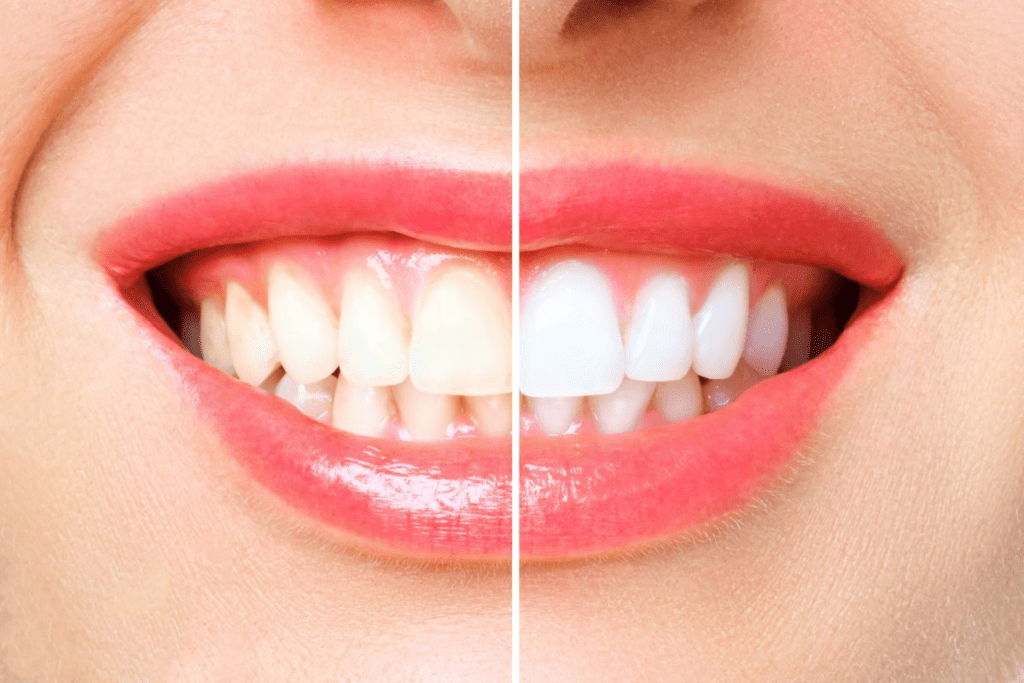A bright, white smile is something many of us strive for, but achieving it doesn’t always have to involve expensive trips to the dentist or chemical-laden whitening products. What if the secret to whiter teeth was already in your kitchen? Enter tomatoes—a versatile superfood not just for your salads but also for your smile. Packed with natural acids and vitamin C, tomatoes are a surprising yet effective ally in achieving a radiant smile. Let’s explore how you can use this simple fruit to naturally brighten your teeth.
Why Tomatoes Work for Teeth Whitening

Tomatoes aren’t just tasty; they’re also loaded with properties that can boost your oral health. Here’s why they work wonders for whitening teeth:
- Rich in Vitamin C: Vitamin C strengthens gums and fights off bacteria. It’s also known for breaking down tartar, a leading cause of tooth discoloration.
- Natural Acidity: The mild acidic nature of tomatoes helps dissolve plaque and surface stains on your teeth, revealing a brighter smile.
- Antioxidant Power: Tomatoes contain antioxidants like lycopene, which can help protect your gums and teeth from oxidative stress and keep your mouth healthy overall.
This combination makes tomatoes a natural and gentle way to lift stains and improve the look of your teeth.
How to Use Tomatoes for Teeth Whitening
Using tomatoes for teeth whitening is as simple as it is effective. Follow these steps to incorporate this natural remedy into your oral care routine:
1. Pick the Right Tomato
Choose a ripe, juicy tomato for the best results. Ripe tomatoes have the highest concentration of natural acids and vitamin C, which are essential for breaking down plaque and lifting stains.
2. Prepare the Tomato
You have two easy options:
- Sliced Method: Slice the tomato into thin pieces.
- Juice Method: Crush or blend the tomato to extract its juice.
Both methods work, so choose the one that feels most convenient for you.
3. Apply to Your Teeth
- Rub the tomato slices directly onto your teeth, focusing on areas with noticeable stains or discoloration.
- If using juice, dip your finger or a cotton swab into the juice and gently rub it onto your teeth.
Let the natural acids work their magic by leaving the juice on your teeth for about 2–3 minutes.
4. Rinse and Brush

After letting the tomato sit, rinse your mouth thoroughly with water to wash away any residual acid. Then, brush your teeth as you normally would using a fluoride toothpaste to ensure no tomato juice is left behind.
5. Repeat Regularly
For the best results, repeat this routine two to three times a week. Over time, you’ll notice your teeth becoming cleaner and brighter.
Benefits Beyond Whitening
Using tomatoes for teeth whitening not only brightens your smile but also improves your overall oral health. Here are a few additional perks:
- Strengthened Gums: The vitamin C in tomatoes helps support healthy, firm gums, reducing the risk of gum disease.
- Reduced Tartar Build-Up: Regular use can help dissolve tartar, which is notorious for causing yellowing and discoloration.
- Natural and Gentle: Unlike chemical whitening agents, tomatoes are gentle on your teeth and don’t cause sensitivity.
Tips for Success with Tomato Whitening

While tomatoes are an excellent natural remedy, there are a few things to keep in mind to ensure you get the best results without harming your teeth:
1. Don’t Overdo It
Tomatoes contain natural acids that, while effective for whitening, can erode enamel if overused. Stick to the recommended frequency of two to three times per week.
2. Follow Up with Fluoride Toothpaste
Brushing with fluoride toothpaste after using tomatoes helps re-strengthen your enamel and provides additional protection against decay.
3. Pair with a Healthy Routine
Tomato whitening should complement—not replace—your regular oral hygiene habits. Continue brushing twice daily, flossing, and scheduling regular dental check-ups.
4. Avoid Extended Contact
Leaving tomato juice on your teeth for too long can weaken enamel. Be sure to rinse thoroughly after each application.
Are There Limitations to Tomato Whitening?
While tomato whitening can produce noticeable improvements, it’s not a miracle solution. Severe discoloration, deep stains, or enamel damage may require professional treatment. Tomatoes are best for maintaining a healthy, bright smile and tackling surface-level stains.
If you’re unsure whether this method is right for you, consult your dentist for personalized advice.
Other Natural Teeth Whitening Alternatives

Tomatoes aren’t the only natural option for a brighter smile. If you’re looking to mix things up, consider these additional remedies:
- Baking Soda and Water: A gentle scrub made from baking soda and water can help remove stains. Use sparingly to avoid enamel damage.
- Coconut Oil Pulling: Swishing coconut oil in your mouth can help reduce plaque and brighten your teeth naturally.
- Strawberries: Like tomatoes, strawberries contain natural acids and vitamin C that can aid in teeth whitening. Mash them into a paste and apply as you would with tomato juice.
Each of these methods has its own set of benefits and works best when combined with a solid oral hygiene routine.
The Science Behind Natural Whitening
Teeth whitening works by addressing stains and discoloration caused by food, drinks, and lifestyle habits. Over time, substances like coffee, tea, wine, and tobacco can leave stains on your teeth. While professional whitening treatments use powerful agents like hydrogen peroxide, natural methods rely on gentler alternatives like acids, antioxidants, and abrasion to lift stains without causing sensitivity.
Tomatoes, in particular, stand out because of their balance of acidity and nutrients, making them a safe and effective option for anyone looking to brighten their smile at home.
Conclusion: A Whiter Smile, Naturally
Achieving a bright, radiant smile doesn’t have to be expensive or involve harsh chemicals. With something as simple and accessible as a ripe tomato, you can naturally enhance your teeth’s appearance while improving your overall oral health. By incorporating this easy method into your weekly routine, you’ll be on your way to a healthier, more confident smile—one bite at a time.
So, next time you see a tomato in your kitchen, remember: it’s not just for your salad; it’s for your smile too!


